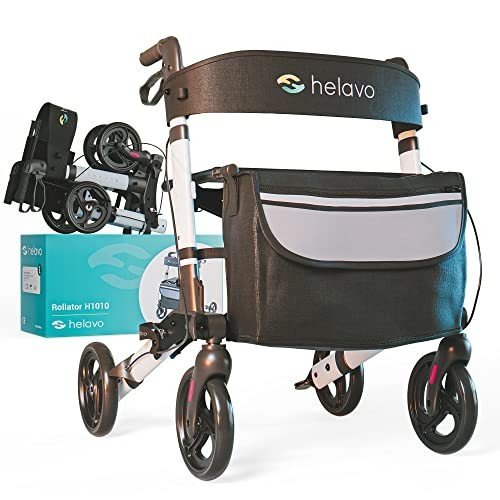Handicap walkers, also commonly known as mobility walkers or just walkers, act as vital aids for individuals with mobility challenges. These devices supply physical support and stability, making it possible for users to stroll more with confidence and separately. This short article explores the various kinds of handicap walkers, their benefits, and crucial considerations when picking one.
A handicap walker is a device created to assist people who have trouble walking due to age, illness, or special needs. Walkers help users maintain their balance, prevent falls, and recuperate mobility. Unlike walking canes, which provide very little support, handicap walkers normally provide a wider base of stability, making them appropriate for more significant mobility challenges.
Handicap walkers can be found in numerous styles, created to meet the special requirements of users. Below is a breakdown of the most common types:
| Type of Walker | Description | Ideal User |
|---|---|---|
| Requirement Walker | A lightweight frame that requires lifting to move. Typically has rubber ideas for traction. | Those who can raise the walker and have moderate balance concerns. |
| Wheeled Walker | Features two wheels at the front, permitting easier mobility without lifting. | Users who can maintain stability and require more support while walking. |
| Rollator Walker | Comparable to wheeled walkers however consists of hand brakes and a seat for resting. | Individuals requiring a portable resting option with boosted mobility. |
| Bariatric Walker | Particularly developed for heavier individuals, using strengthened frames and larger hand grips. | Heavier users needing extra support and stability. |
| Child Walker | Personalized designs for children to aid in their advancement and mobility. | Kids with developmental hold-ups or mobility challenges. |
Numerous users find that handicap walkers substantially improve their quality of life. Here are some benefits:
Handicap walkers supply a sturdy assistance structure, which assists prevent falls and enhances users' self-confidence when moving.
Walkers make it simpler for people with mobility restrictions to browse stairs, unequal surfaces, and other tough environments.
Utilizing a walker allows people to perform daily activities separately, whether it's walking your home or going shopping.
Walkers enhance posture and distribute weight more equally, potentially relieving pain in joints and muscles throughout motion.
By helping with mobility, walkers enable users to get involved more actively in gatherings, family events, and neighborhood activities, promoting a sense of belonging.
Picking the ideal handicap walker is essential for ensuring safety and convenience. Below are key aspects to think about:
User's Height: Walkers can be found in various heights. It's vital to select one that enables the user to stand upright with a slight bend in the elbows when keeping the deals with.
Weight Capacity: Assess the weight capability of the walker, particularly for bariatric options, to ensure it matches the user's requirements.
Mobility: If the walker will be utilized frequently in numerous areas, consider models that can be easily folded or transported, such as rollators.
Features: Some walkers include extra features like padded seats, storage baskets, and adjustable deals with. Assess which functions are most advantageous for the user.

User Preferences: The person's convenience and choices need to also play a significant function in the selection. Evaluating various designs might assist determine the very best fit.
Utilizing a handicap walker properly guarantees safety and maximizes its benefits. Follow these actions for safe usage:
Requirement walkers require the user to lift them with each action, while rollators have wheels and allow the user to press them forward without lifting. Rollators also usually include brakes and might have a seat.
Protection for handicap walkers can differ based upon an individual's insurance plan. It is advisable to contact the supplier for particular details regarding coverage and any needed documentation required.
Yes, there are walkers developed specifically for children that accommodate their developmental requirements. It's essential to choose a model that is age-appropriate and provides the essential assistance.

Frequently check the walker for wear and tear, including the grips and wheels. Clean the walker as required and make sure all elements are working correctly for safety.
This differs by person. Users ought to speak with their doctor to examine mobility enhancements and discuss whether transitioning to a different mobility aid or moving without support is appropriate.
A handicap walker can be a transformative tool for individuals with mobility obstacles, using them greater stability, self-reliance, and enhanced quality of life. By comprehending the various types, benefits, and crucial factors to consider in choosing a walker, people can make informed options that line up with their unique requirements and lifestyle. Whether for rehab, aging with dignity, or managing disabilities, handicap walkers play an essential function in promoting mobility and wellness.